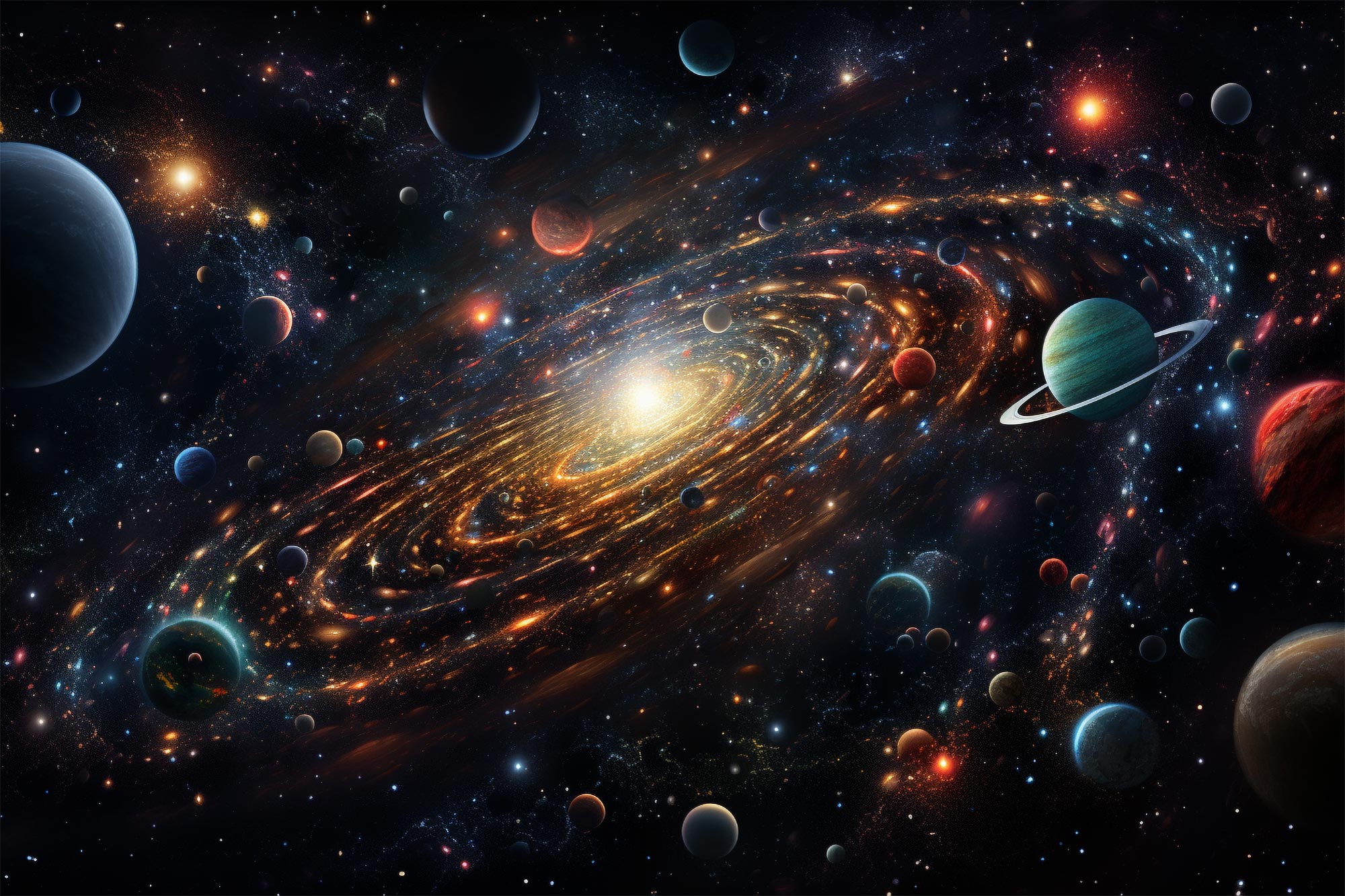
Teleskop Luar Angkasa James Webb NASA telah merilis visualisasi 3D yang menunjukkan hampir 5.000 galaksi, termasuk Galaksi Macy, salah satu galaksi tertua, yang terbentuk 390 juta tahun setelah Big Bang. Pengamatan penting ini menunjukkan kemampuan pencitraan canggih Webb, yang memungkinkan para peneliti menjelajahi bagian alam semesta yang sebelumnya tak terlihat dan mengajukan pertanyaan baru tentang pembentukan bintang di galaksi-galaksi awal ini.
Data tersebut menunjukkan kemampuan Webb untuk mencitrakan dan mengidentifikasi ribuan galaksi secara bersamaan.
Office of Public Outreach dari Space Telescope Science Institute telah merilis visualisasi sains baru dari data survei CEERS (Cosmic Early Evolutionary Science). Video tersebut adalah penjelajahan Webb di wilayah yang dikenal sebagai Extended Groth Strip, mengungkap banyak galaksi yang belum pernah terlihat sebelumnya. Ini menampilkan kekayaan galaksi di seluruh alam semesta dan diakhiri dengan Galaksi Macy, yang terletak 13,4 miliar tahun cahaya dari Bumi.
Visualisasi 3D ini menggambarkan sekitar 5.000 galaksi dalam sebagian kecil survei CEERS (Cosmic Evolution of Early Launch Science), yang mengumpulkan data dari wilayah yang dikenal sebagai Extended Groth Strip. Saat kamera menjauh dari pandangan kita, setiap detik sama dengan 200 juta tahun cahaya dalam kumpulan data, melihat 200 juta tahun lagi di masa lalu. Penampakan galaksi berubah, mencerminkan fakta bahwa benda-benda jauh terlihat pada masa-masa awal di alam semesta, ketika galaksi-galaksi masih kurang berkembang. Video berakhir di Galaksi Maisie, yang terbentuk hanya 390 juta tahun setelah Big Bang, atau sekitar 13,4 miliar tahun lalu.
Visualisasi 3D baru menyoroti 5.000 galaksi yang diungkapkan oleh Teleskop Luar Angkasa Webb
Video ini, visualisasi sains dari galaksi yang ditangkap sebagai bagian dari CEER Survey (Early Launch Science of Cosmic Evolution), menghadirkan misi besar dari sebelumnya[{” attribute=””>NASA’s James Webb Space Telescope. It flies by thousands of galaxies, starting with those nearby and ending with less-developed galaxies in the very distant universe, including one never seen before Webb.
The area highlighted in this visualization is a small part of the Extended Groth Strip, a region between the Ursa Major and Boötes constellations originally observed by the Hubble Space Telescope between 2004 and 2005. While this vast region contains about 100,000 galaxies, the visualization focuses on approximately 5,000 – with the nearest and more complex galaxies, shown in the beginning, located within a few billion light-years of Earth. As the visualization proceeds, showing galaxies farther away from Earth, we see different stages of the universe’s history and evolution.

Extended Groth Strip. Credit: NASA, ESA, M. Davis (University of California, Berkeley), and A. Koekemoer (STScI)
The visualization’s farthest galaxy, known as Maisie’s Galaxy, is a target of great interest to astronomers. It formed about 390 million years after the big bang, or about 13.4 billion years ago. It’s not only one of the first bright, extremely distant galaxies found by Webb, but it’s also an example of an early galaxy that only Webb could see. This is because Webb’s instruments can capture the light from these early galaxies, which has been shifted to infrared wavelengths by the expansion of the universe.
“This observatory just opens up this entire period of time for us to study,” said Rebecca Larson of the Rochester Institute of Technology in Rochester, New York, one of the survey’s investigators. “We couldn’t study galaxies like Maisie’s before because we couldn’t see them. Now, not only are we able to find them in our images, we’re able to find out what they’re made of and if they differ from the galaxies that we see close by.”
Steven Finkelstein of the University of Texas at Austin, principal investigator of the CEERS program, continued, “This observation exceeded our expectations. The sheer number of galaxies that we’re finding in the early universe is at the upper end of all predictions.” The observatory’s ability to conduct surveys like these provides a demonstration of Webb’s instruments for astronomers to reference for future observations.
This visualization not only shows just how far Webb can observe, but also how much it builds off the accomplishments of Hubble. In many cases, Hubble’s observations, along with Webb’s data from the CEERS Survey, enabled researchers to determine which galaxies were truly far away – the early-universe galaxies of interest – and which were nearby, but so dusty that their visible light was obscured.
With these observations, the next goal for researchers is to learn about the formation of stars in these early galaxies.
“We’re used to thinking of galaxies as smoothly growing,” Finkelstein remarked. “But maybe these stars are forming like firecrackers. Are these galaxies forming more stars than expected? Are the stars they’re making more massive than we expect? These data have given us the information to ask these questions. Now, we need more data to get those answers.”
The James Webb Space Telescope is the world’s premier space science observatory. Webb is solving mysteries in our solar system, looking beyond to distant worlds around other stars, and probing the mysterious structures and origins of our universe and our place in it. Webb is an international program led by NASA with its partners, ESA (European Space Agency) and the Canadian Space Agency.

“Penggemar bir. Sarjana budaya pop yang setia. Ninja kopi. Penggemar zombie jahat. Penyelenggara.”






More Stories
Roket Falcon 9 SpaceX berhenti sebelum diluncurkan, miliarder dalam misi khusus
Bagaimana lubang hitam bisa menjadi begitu besar dan cepat? Jawabannya terletak pada kegelapan
Seorang mahasiswa Universitas North Carolina akan menjadi wanita termuda yang melintasi batas luar angkasa dengan kapal Blue Origin